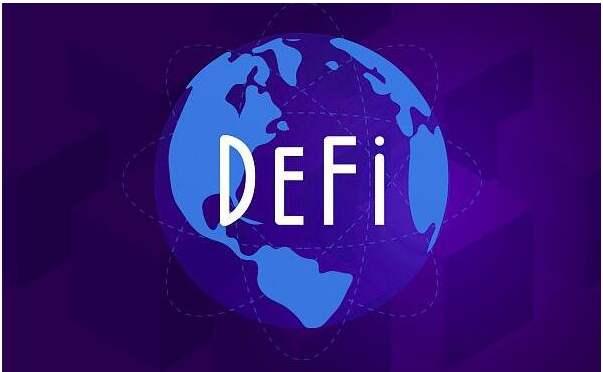Why is the decentralized Staking protocol an important piece of the ETH2.0 puzzle?
Author: Ray Xiao
Source: IOSG Venture
1. How big is the Ethereum 2.0 staking market cake?
1.1 Ethereum Market Cap Prediction
Here we estimate the future changes in Ethereum's market cap based on its performance over the past four years:
 (ETH-related data source: Coingecko, CMC)
(ETH-related data source: Coingecko, CMC)
There are two historical data points that will serve as the basis for future predictions:
- The CAGR of Ethereum's market cap from 2017 to 2021 was 55.64%, and it is expected to continue growing at this rate in the future.
- The average inflation rate of Ethereum tokens from 2017 to 2021 was 7.65%, and it is anticipated that Ethereum's inflation rate will decrease year by year, dropping to 2% by 2025.
1.2 ETH2.0 Staking Market Size Prediction
Based on historical data to predict Ethereum's future market cap and the growth of Ethereum's staking rate, it can be seen that the market size for third-party staking services will reach approximately $2.3 billion to $4.6 billion by 2025.
(Note: JP Morgan previously predicted that ETH2 staking would reach $40 billion by 2025, which is the total revenue of the entire network. If we multiply this by the average fee of third-party service providers at 10%, it is also nearly $4 billion. https://cointelegraph.com/news/jpmorgan-report-eth2-could-kick-start-40b-staking-industry-by-2025)

(Note: The number of ETH2.0 staking tokens is estimated based on a historical annual growth rate of 1.27x; currently, third-party StaaS providers account for about 50%, so we estimate the actual market size for third-party staking services in 2025 to be approximately $2.3 billion to $4.6 billion.)
2. Comparison of Decentralized Staking Service Providers
The staking service market can be roughly divided into two types of providers: centralized StaaS providers (such as Infstone, Staked, and major centralized exchanges like Binance and Kraken offering staking services) and decentralized StaaS providers (such as Lido, Stakewise, Rocketpool, Swell Network, etc.).
Among decentralized providers, there can be further subdivisions: permissioned validators (Lido) and permissionless validators (Rocket Pool, Swell Network).

Source: https://beaconcha.in/validator/217392
Rocket Pool halved the required staking amount from 32 ETH to 16 ETH within two months of its launch.

Source: https://beaconcha.in/validator/257530
The upcoming version of Swell Network successfully achieved complete non-custodial staking and reduced the required staking amount from 32 ETH to 1 ETH through atomic transactions.

Source: https://beaconcha.in/
Among staking service providers, we believe that the decentralized solutions will have greater growth potential and application scenarios due to the following reasons: 1. Most centralized providers are restricted by compliance requirements and cannot implement liquidity tokens. 2. Decentralized providers can apply liquidity solutions to DeFi, NFT, and other scenarios, greatly addressing the liquidity pain points for a large number of users.

3. Opportunities
3.1. Large Untapped Market of Small Users
On one hand, from the perspective of market participation, although the amount of ETH staked has shown good growth over the past year, currently, less than 10% of ETH has participated in ETH2.0 staking, indicating a significant growth opportunity to reach over 50% staking rate across the network.
On the other hand, when we observe the current market landscape of staking service providers, we can see that nearly 40% of ETH is staked on non-third-party service provider nodes (most likely operated by individuals), indicating that there is still a huge growth space for liquidity staking solutions. As liquidity staking becomes increasingly integrated with DeFi applications, we believe more small users will enter the liquidity staking market.

Source: https://pro.nansen.ai/eth2-deposit-contract
3.2. Token Mechanism Design Can Fully Integrate with DeFi and NFT Markets
Currently, a prominent issue is that the business scope of staking tokens needs to be expanded. Lido's stETH is temporarily leading in this ecological expansion aspect, with the AUM of the stETH/ETH pool on Curve.fi reaching $3.5 billion, while MakerDAO and AAVE have also accepted stETH as collateral for loans.
However, for end users, there are still many application scenarios worth exploring. For example, Swell Network recently innovatively introduced NFT certificates for user deposits, further enabling interesting products like NFT lending to provide more attractive yields.
3.3 Security Upgrades
In terms of staking business security, major staking projects are intensifying their collaborations.
Regarding smart contract security, in October 2021, the founder of Stakewise acted as a white hat and discovered security vulnerabilities in the smart contracts of Lido and Rocket Pool that could allow malicious staking nodes to withdraw funds from the pool (see details: https://medium.com/immunefi/rocketpool-lido-frontrunning-bug-fix-postmortem-e701f26d7971).
In terms of underlying infrastructure, major staking protocols are also accelerating collaboration with SSV technology development teams (Obol Network and SSV Network) to make ETH2.0 validator nodes more decentralized and secure. Overall, regarding the staking market, we believe:
- The entire third-party staking service market will still see at least 3-4 times growth in market size in the next 1-2 years.
- Decentralized staking service providers will have better growth opportunities, and there will be differentiation among them towards more B-end (e.g., Stakewise) and more C-end directions (e.g., RocketPool, Swell Network).
- The C-end market space has not yet been opened, and the application of liquid tokens in more DeFi and NFT protocols, along with higher yields, will be key to attracting small users. In this regard, we are currently more optimistic about solutions like Swell Network.










